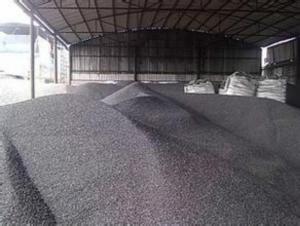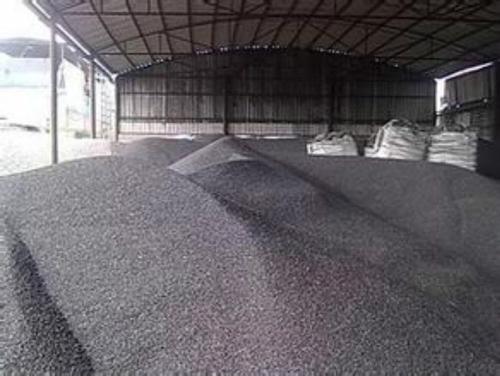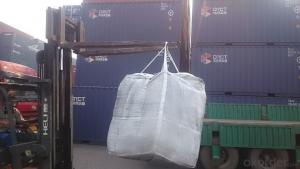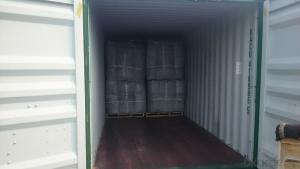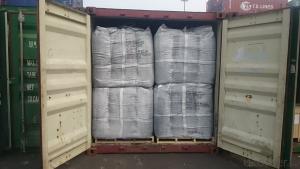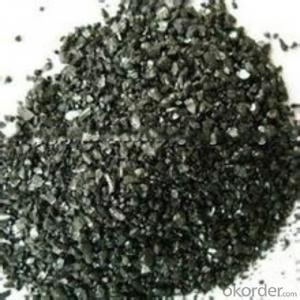GPC with lower Sulphur0.03% max in Low VM
- Loading Port:
- Tianjin
- Payment Terms:
- TT OR LC
- Min Order Qty:
- 21 m.t.
- Supply Capability:
- 5000 m.t./month
OKorder Service Pledge
OKorder Financial Service
You Might Also Like
Introduction:
GPC has good characteristics with low ash, low resistivity, low sulphur, high carbon and high density. It is the best material for high quality carbon products. It is used as carbon additive in steel industry or fuel. it is playing more and more important role in the industry
Features:
1.Our strong team provide you reliable service that make you feel purchasing is more easier
2. We ensure that we can supply capability with competitive price.
3. Work strictly to guarantee product quality,
Specifications:
F.C.% | 95MIN | 94MIN | 93MIN | 92MIN | 90MIN | 85MIN | 84MIN |
ASH % | 4MAX | 5MAX | 6 MAX | 6.5MAX | 8.5MAX | 12MAX | 13MAX |
V.M.% | 1 MAX | 1MAX | 1.0MAX | 1.5MAX | 1.5MAX | 3 MAX | 3 MAX |
SULFUR % | 0.3MAX | 0.3MAX | 0.3MAX | 0.35MAX | 0.35MAX | 0.5MAX | 0.5MAX |
MOISTURE % | 0.5MAX | 0.5MAX | 0.5MAX | 0.5MAX | 0.5MAX | 1MAX | 1MAX |
Pictures
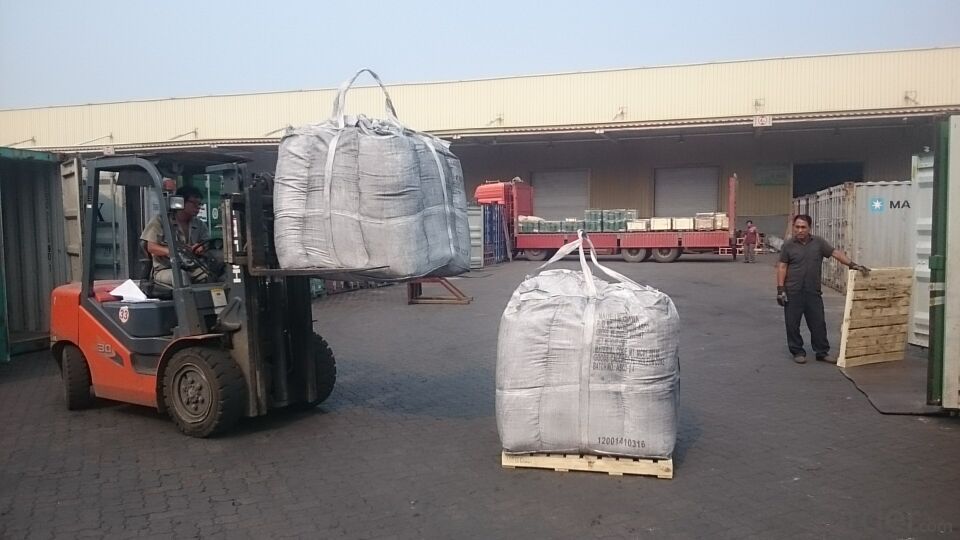
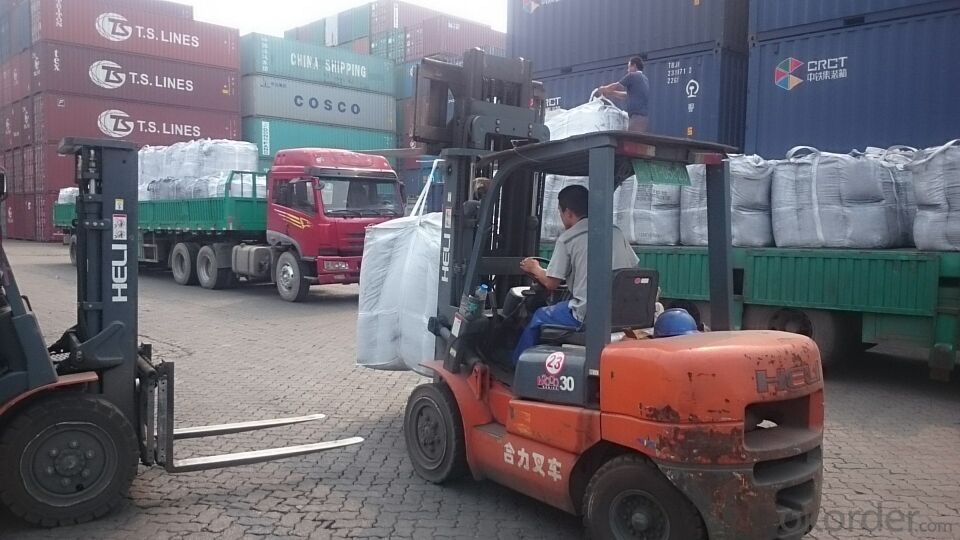
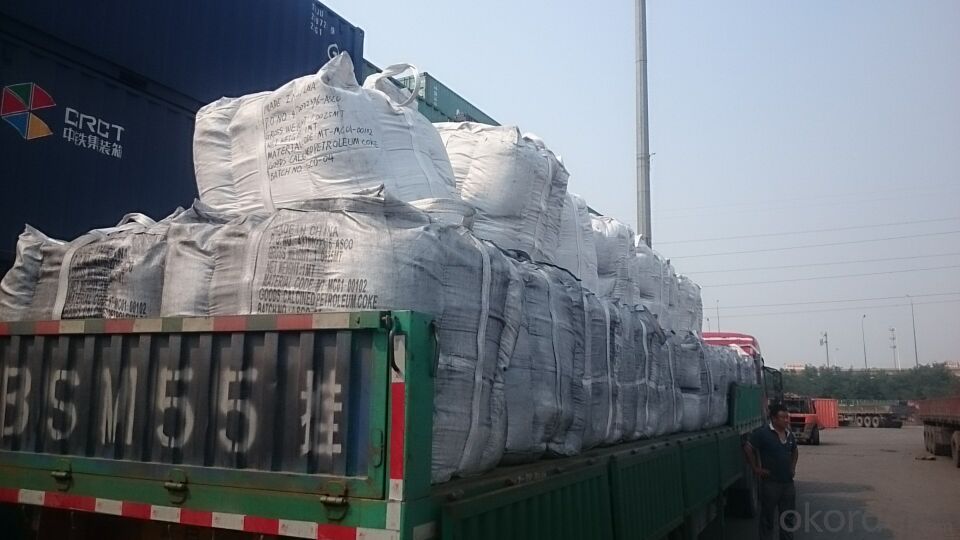
FAQ:
1. Your specification is not very suitable for us.
Please offer us specific indicators by TM or email. We will give you feedback as soon as possible.
2. When can I get the price?
We usually quote within 24 hours after getting your detailed requirements, like size, quantity etc. .
If it is an urgent order, you can call us directly.
3. Do you provide samples?
Yes, samples are available for you to check our quality.
Samples delivery time will be about 3-10 days.
4. What about the lead time for mass product?
The lead time is based on the quantity, about 7-15 days. For graphite product, apply Dual-use items license need about 15-20 working days.
5. What is your terms of delivery?
We accept FOB, CFR, CIF, EXW, etc. You can choose the most convenient way for you. Besides that,
we can also shipping by Air and Express.
6. Product packaging?
We are packed in bulk ship or in ton bag or placing in container or according to your requirements.
7. Notice
please note that the price on Alibaba is a rough price. The actual price will depends on raw materials, exchange rate wage and your order quantity .Hope to cooperation with you, thanks !
- Q: What is carbon offsetting in aviation?
- The aviation industry utilizes carbon offsetting as a mechanism to counterbalance the carbon emissions it generates. Since airplanes contribute significantly to greenhouse gas emissions, carbon offsetting offers a means for airlines and passengers to acknowledge their carbon footprint and contribute to the battle against climate change. The carbon offsetting process involves calculating the quantity of carbon dioxide and other greenhouse gases released during a flight, and subsequently investing in projects that decrease an equal amount of emissions elsewhere. These projects may encompass initiatives involving renewable energy, forest preservation, or methane capture. The objective is for the emissions reduced or eliminated by these projects to compensate for the emissions produced by the aviation industry. To partake in carbon offsetting, airlines or passengers can acquire carbon offsets, which essentially represent credits equivalent to the reduction or elimination of one metric ton of carbon dioxide or its equivalent. These offsets are generated by certified projects that adhere to stringent standards and undergo independent verification. By investing in carbon offsets, the aviation industry can contribute to global endeavors aimed at reducing greenhouse gas emissions and mitigating the impact of air travel on climate change. It enables airlines and passengers to promptly take action to counteract the environmental repercussions of flying, as the reduction or elimination of emissions from offset projects helps to balance out the emissions generated by air travel. It is crucial to note that carbon offsetting in aviation should not serve as a means to justify or neglect the necessity of long-term solutions to reduce emissions from aircraft. Instead, it should be regarded as a supplementary measure to other strategies, such as investing in more fuel-efficient aircraft, utilizing sustainable aviation fuels, and implementing operational improvements. Nonetheless, carbon offsetting does provide a valuable tool to mitigate emissions in the short term, while the aviation industry endeavors to adopt more sustainable practices.
- Q: What are the impacts of carbon emissions on the availability of freshwater resources?
- Carbon emissions have a significant impact on the availability of freshwater resources. One of the primary effects is the alteration of the global climate system. Increased carbon emissions lead to the greenhouse effect, which causes global warming. As a result, the Earth's temperature rises, leading to changes in weather patterns and precipitation. These changes in weather patterns can disrupt the water cycle, which crucially affects the availability of freshwater. Warmer temperatures increase evaporation rates, causing more water to be lost from lakes, rivers, and groundwater reservoirs. This leads to a reduction in the overall volume of available freshwater. Furthermore, global warming can exacerbate drought conditions in some regions. As carbon emissions contribute to rising temperatures, the frequency and intensity of droughts increase. This further reduces freshwater availability, as precipitation is limited, and water sources become depleted. Carbon emissions also impact freshwater resources through their effect on melting polar ice caps and glaciers. As the Earth warms, these frozen water sources melt at an accelerated rate, adding additional freshwater to the global water system initially. However, once these ice sources are depleted, the loss of freshwater will be significant. This process not only decreases the overall volume of freshwater available but also affects the quality of freshwater resources, as the melting ice can introduce pollutants and contaminants into the water. Moreover, carbon emissions contribute to ocean acidification, which has indirect effects on freshwater resources. Increased carbon dioxide in the atmosphere is absorbed by the oceans, leading to acidification. This change in the ocean's chemistry can harm marine ecosystems, including coral reefs, which are crucial for maintaining the health of coastal freshwater sources such as aquifers. To mitigate the impacts of carbon emissions on freshwater resources, it is vital to reduce greenhouse gas emissions and transition towards cleaner and renewable energy sources. Additionally, implementing effective water management practices, such as conservation measures, efficient irrigation systems, and the protection of water sources, can help preserve and sustain freshwater resources in the face of climate change and carbon emissions.
- Q: What is fullerene?
- A unique structure resembling a hollow cage or sphere is what constitutes a fullerene, a molecule composed entirely of carbon atoms. Alongside graphite and diamond, it is considered a form of carbon allotrope. The renowned and most commonly known fullerene is referred to as buckminsterfullerene or simply C60, which takes the shape of a soccer ball with 60 carbon atoms. Fullerenes come in a range of sizes, from as little as 20 carbon atoms to several hundred. They can be found naturally in soot or formed through different methods like laser ablation or chemical vapor deposition. With their distinct structure, fullerenes possess exceptional properties, such as high strength, low density, and excellent electrical and thermal conductivity. Therefore, they have found applications in various fields, including nanotechnology, electronics, medicine, and materials science.
- Q: How is carbon used in the production of paints and pigments?
- Carbon is used in the production of paints and pigments primarily as a black pigment. Carbon black, which is derived from the incomplete combustion of hydrocarbons, is mixed with binders to create black paints and pigments. It provides excellent opacity, color retention, and UV resistance, making it a popular choice in various applications, including automotive coatings, printing inks, and architectural paints.
- Q: What are the implications of melting permafrost on carbon emissions?
- The melting of permafrost has significant implications on carbon emissions. Permafrost contains large amounts of organic matter, such as dead plants and animals, which have been frozen and stored for thousands of years. When permafrost thaws, this organic matter decomposes and releases carbon dioxide and methane, two potent greenhouse gases. These greenhouse gases further contribute to global warming, exacerbating climate change. Additionally, the release of carbon from melting permafrost creates a positive feedback loop, as increased global temperatures lead to more permafrost thawing, causing even more carbon emissions. This highlights the urgent need to address permafrost melting as part of efforts to mitigate climate change.
- Q: What is carbon dioxide?
- Carbon dioxide (CO2) is a colorless and odorless gas that consists of carbon and oxygen atoms. It is formed through the combustion of fossil fuels, as well as the natural processes of respiration and volcanic activity. Carbon dioxide plays a crucial role in the Earth's atmosphere as a greenhouse gas, trapping heat and contributing to the planet's overall temperature. While it occurs naturally, human activities such as burning of fossil fuels and deforestation have significantly increased its concentration in the atmosphere, leading to global warming and climate change. Carbon dioxide is also a byproduct of various industrial processes, such as cement production and power generation. Efforts to reduce carbon dioxide emissions are essential to mitigate the effects of climate change and maintain a sustainable environment.
- Q: What are the effects of carbon emissions on human respiratory health?
- Human respiratory health can be significantly affected by carbon emissions. Carbon dioxide (CO2) is a primary component of carbon emissions and contributes to both air pollution and climate change. The presence of high levels of carbon dioxide in the atmosphere can result in the concentration of other pollutants like nitrogen oxides, sulfur dioxide, and particulate matter increasing. Exposure to these pollutants, particularly fine particulate matter (PM2.5), has been associated with various respiratory issues. Inhaling PM2.5 can cause irritation in the airways, leading to symptoms such as coughing, wheezing, and breathlessness. It can also worsen existing respiratory conditions like asthma, chronic obstructive pulmonary disease (COPD), and bronchitis. Long-term exposure to elevated levels of PM2.5 has been linked to the development of respiratory diseases and can contribute to higher hospital admissions and mortality rates. Moreover, carbon emissions contribute to the creation of ground-level ozone, a harmful pollutant that plays a significant role in smog formation. Ozone can cause inflammation and damage to the respiratory system, resulting in respiratory symptoms and reduced lung function. It can also aggravate pre-existing respiratory conditions and increase the susceptibility to respiratory infections. Apart from these direct effects, carbon emissions also contribute to climate change, which indirectly impacts respiratory health. Climate change can lead to more frequent heatwaves and extreme weather events, which can worsen air quality and trigger respiratory symptoms. It can also alter the distribution of allergens like pollen, mold spores, and dust mites, thereby increasing the prevalence of respiratory allergies and asthma. Overall, carbon emissions have substantial adverse effects on human respiratory health. They contribute to air pollution, which can cause respiratory symptoms, worsen existing respiratory conditions, and elevate the risk of developing respiratory diseases. Additionally, they contribute to climate change, which indirectly affects respiratory health by influencing air quality and the prevalence of allergens. Therefore, reducing carbon emissions and improving air quality are vital for safeguarding and promoting respiratory health.
- Q: What are the impacts of carbon emissions on the stability of kelp forests?
- Carbon emissions have significant impacts on the stability of kelp forests. Increased carbon dioxide (CO2) levels in the atmosphere lead to ocean acidification, which has detrimental effects on kelp. As CO2 dissolves in seawater, it forms carbonic acid, lowering the pH of the ocean. This acidification inhibits the growth and development of kelp, making them more vulnerable to stressors and reducing their overall stability. Ocean acidification affects the physiology of kelp in several ways. It hampers their ability to take up essential nutrients, such as nitrogen and phosphorus, which are crucial for their growth. This nutrient limitation weakens the kelp, making them more susceptible to diseases, predation, and damage from storms. Additionally, acidified seawater can hinder the development of kelp spores, impairing their ability to reproduce and regenerate kelp forests. Furthermore, carbon emissions contribute to rising sea temperatures, which also have detrimental effects on kelp forests. As the climate warms, kelp may experience thermal stress, leading to reduced growth rates and increased mortality. Warmer waters can also favor the growth of harmful algae species, which can outcompete kelp for space and resources, further destabilizing kelp forests. The stability of kelp forests is crucial as they provide numerous ecosystem services. They act as important carbon sinks, absorbing and storing large amounts of carbon dioxide from the atmosphere. Kelp forests also provide habitat and nursery grounds for a wide variety of marine species, including commercially important fish and invertebrates. They help maintain the health and productivity of coastal ecosystems by reducing coastal erosion, improving water quality, and supporting biodiversity. To mitigate the impacts of carbon emissions on kelp forests, it is essential to reduce our carbon footprint by transitioning to cleaner and more sustainable energy sources. Additionally, protecting and restoring coastal habitats, including kelp forests, can enhance their resilience to climate change and other stressors. Implementing sustainable fishing practices and establishing marine protected areas can also help preserve and maintain the stability of kelp forests and the valuable ecosystem services they provide.
- Q: Is carbon a solid, liquid, or gas at room temperature?
- Carbon is a solid at room temperature.
- Q: How is carbon used in the production of fuels?
- Fuels production heavily relies on carbon, which serves as the primary element in fossil fuels like coal, oil, and natural gas. These fuels are formed through the decomposition of ancient plants and animals over millions of years, a process called carbonization. Carbonization involves subjecting organic materials to prolonged exposure to high temperature and pressure, resulting in the formation of hydrocarbon-rich substances. For instance, coal consists mainly of carbon, with traces of other elements. When coal is burned, the carbon reacts with oxygen, releasing heat energy. This heat can be utilized to generate steam, which then powers turbines for electricity production or industrial engines. Similarly, oil and natural gas, which are predominantly carbon-based, are extracted from underground reservoirs. These hydrocarbons can undergo refining to produce various fuel types such as gasoline, diesel, and jet fuel. The combustion of these fuels in engines or power plants releases energy for transportation and electricity generation. Aside from fossil fuels, carbon plays a crucial role in the production of alternative fuels like biofuels. Biofuels are derived from renewable sources such as plants, algae, or agricultural waste. The carbon within these organic materials can be converted into ethanol or biodiesel through processes like fermentation or transesterification, respectively. These biofuels can then be used as substitutes for conventional fuels, reducing greenhouse gas emissions and lessening reliance on non-renewable resources. In conclusion, carbon is a vital component in fuel production, whether obtained from fossil fuels or renewable sources. Its combustion generates energy that powers various sectors including electricity, transportation, and industry. Nevertheless, it is crucial to explore and adopt sustainable alternatives like biofuels and renewable energy sources to mitigate the negative environmental impacts associated with carbon emissions.
Send your message to us
GPC with lower Sulphur0.03% max in Low VM
- Loading Port:
- Tianjin
- Payment Terms:
- TT OR LC
- Min Order Qty:
- 21 m.t.
- Supply Capability:
- 5000 m.t./month
OKorder Service Pledge
OKorder Financial Service
Similar products
Hot products
Hot Searches
